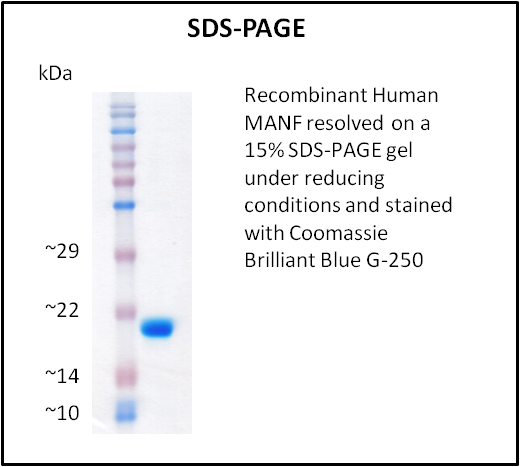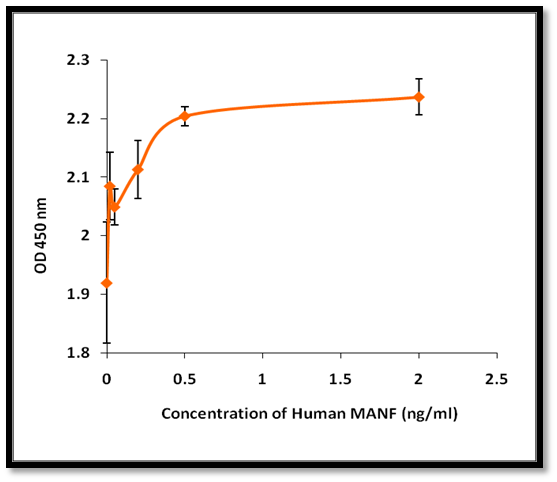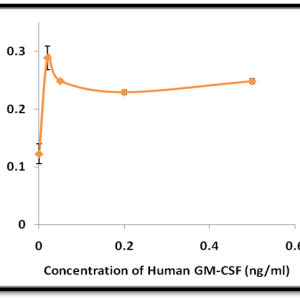Product Details
- Product Name: Recombinant Human MANF (E. coli)
- Product Type: Neurotrophic Factors & Cytoprotective Proteins
- Catalog Number: Z102065
- Unit Size: 40 µg
- Species: Human (Homo sapiens)
- Gene Symbol: MANF
- Gene ID: 7873
- Accession Number: P55145
- Source: E. coli
- Molecular Weight: ~18.4 kDa (predicted)
- Form: Lyophilized powder
- Purity: >95% (SDS-PAGE)
- Endotoxin Level: <1.0 EU/µg (LAL method)
- Appearance: White to off-white lyophilized powder
- Formulation: Lyophilized from a 0.2 μm filtered PBS solution
- Storage:
- Lyophilized: –70 °C (≥ 12 months)
- After reconstitution:
- 2–8 °C (≤ 1 month)
- –20 °C (≤ 6 months, preferably in aliquots)
- Avoid repeated freeze–thaw cycles
- Shipping: Dry ice
- Usage: For research use only; not for diagnostic or therapeutic applications
Overview
Mesencephalic astrocyte-derived neurotrophic factor (MANF) is a secreted and ER/Golgi-localized protein with conserved structural homology to cerebral dopamine neurotrophic factor (CDNF).
This recombinant MANF promotes cell survival under ER stress conditions (e.g., tunicamycin- or thapsigargin-induced cytotoxicity), offering value in research on neurodegeneration, ischemic injury, and protein folding diseases. Its protective role against chemically induced apoptosis makes it particularly relevant for mechanistic studies of the unfolded protein response (UPR) and cell stress pathways.
Key Features and Benefits
- Potent Cytoprotective Activity: Demonstrated ability to protect cells from tunicamycin- and thapsigargin-induced death.
- High-Yield Bacterial Expression: Produced in E. coli for efficient recombinant production.
- High Purity & Low Endotoxin: Suitable for sensitive cellular and biochemical assays.
- Research-Validated Bioactivity: Activity confirmed in ER stress-related cell survival models.
- Broad Application Potential: Relevant to neurodegeneration, metabolic stress, ischemia, and protein misfolding disease research.
Reconstitution Instructions
- Centrifuge the vial briefly to collect lyophilized material at the bottom.
- Reconstitute with sterile PBS to a concentration of 200 μg/mL or as needed.
- Mix gently by swirling or tapping; avoid vortexing.
- Dilute in appropriate buffers or media for your experiment.
- Storage after reconstitution: Store aliquots at 2–8 °C for up to 1 month, or at –20 °C for up to 6 months with a carrier protein. Avoid repeated freeze–thaw cycles.
Quality Control (QC)
- Purity verified by SDS-PAGE (>95%)
- Endotoxin level confirmed (<1.0 EU/µg, LAL method)
- Bioactivity validated in ER stress–related cell protection assay
Caution
This product is intended for laboratory research only. It is not for therapeutic, diagnostic, or clinical use in humans or animals.
Disclaimer
- For research use only.
- Not for human or veterinary use.
- Not for diagnostic or therapeutic procedures.
- No warranties or guarantees are expressed or implied beyond the stated intended use.
- Users are solely responsible for regulatory compliance and safe handling.



